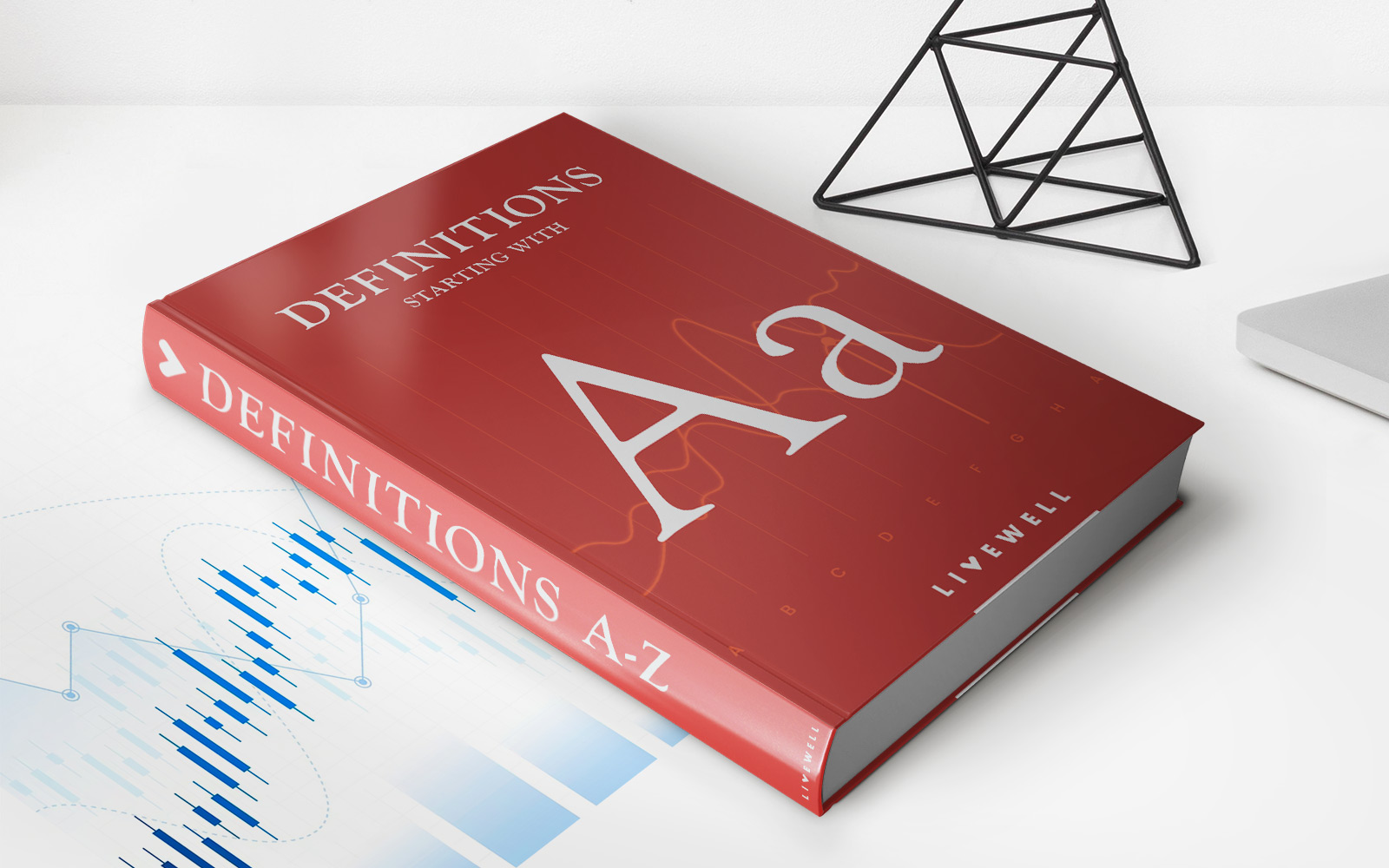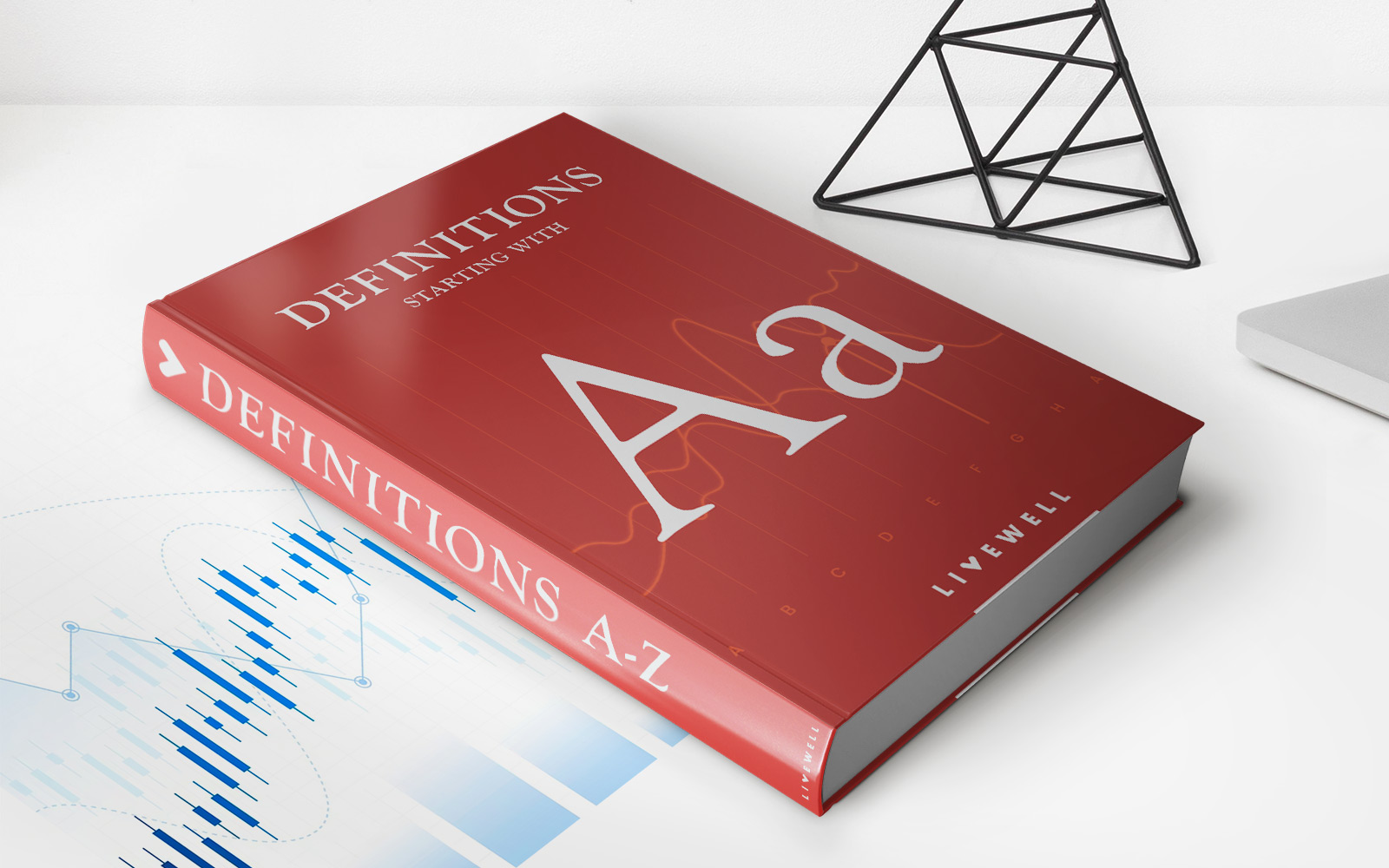

Finance
How Do Private Student Loans Get Disbursed
Published: January 20, 2024
Learn how private student loans are disbursed and manage your finances with ease. Get the funds you need for your education today.
(Many of the links in this article redirect to a specific reviewed product. Your purchase of these products through affiliate links helps to generate commission for LiveWell, at no extra cost. Learn more)
Table of Contents
- Introduction
- Understanding Private Student Loans
- Application Process for Private Student Loans
- Eligibility Requirements for Private Student Loans
- Loan Disbursement Process
- Factors Influencing Disbursement of Private Student Loans
- Timelines for Loan Disbursement
- Tips for Managing Disbursed Private Student Loans
- Conclusion
Introduction
Obtaining a higher education is a significant milestone in life, but the rising costs of tuition can often pose a financial challenge for many students and their families. While scholarships, grants, and federal student loans are common sources of financial aid, private student loans serve as an additional option to bridge the financial gap. Private student loans are offered by financial institutions and help students fund their education expenses, including tuition fees, textbooks, and living expenses.
Understanding the process of private student loan disbursement is crucial for borrowers, as it ensures a seamless flow of funds to cover their educational needs. This article aims to shed light on how private student loans get disbursed and provides valuable insights into the loan application process, eligibility requirements, disbursement timelines, and tips for managing disbursed loans.
Private student loans differ from federal loans in that they are not funded or guaranteed by the government. Instead, they are provided by banks, credit unions, and online lenders. These loans often offer flexibility in terms of loan amounts, repayment options, and interest rates, but they typically require a credit check and may involve a cosigner, especially for students with limited credit history or income.
The application process for private student loans is usually straightforward. Borrowers are required to complete an application form provided by the lender and provide relevant documentation, including proof of enrollment, financial information, and identification. Lenders assess the borrower’s creditworthiness and may consider factors such as their credit score, income, and employment history to determine loan approval and interest rates.
Once the loan is approved and the borrower has accepted the terms and conditions, the loan proceeds go through a disbursal process. Loan disbursement refers to the transfer of funds from the lender to the educational institution or directly to the borrower, depending on the loan agreement. Understanding the factors influencing loan disbursement and knowing the timelines for disbursement are crucial for borrowers to effectively manage their finances during their educational journey.
Understanding Private Student Loans
Private student loans are loans obtained from financial institutions, such as banks, credit unions, or online lenders, to help cover the costs of higher education. Unlike federal student loans, which are funded and guaranteed by the government, private student loans are offered by private lenders and are subject to their terms and conditions.
Private student loans typically offer borrowers more options in terms of loan amounts, repayment terms, and interest rates. Borrowers can use these loans to pay for tuition fees, textbooks, housing, transportation, and other education-related expenses. However, it is important to carefully consider the terms of the loan and assess its affordability before borrowing.
Interest rates for private student loans can be either fixed or variable. Fixed interest rates remain the same throughout the repayment period, while variable interest rates can fluctuate over time based on market conditions. The interest rates offered by private lenders are generally higher than those for federal student loans, and borrowers with excellent credit may have access to more competitive rates.
Private student loans often require a credit check as part of the application process. Since most students have limited credit history or income, lenders may require a cosigner, such as a parent or guardian, who has a strong credit profile. The cosigner acts as a guarantor and is equally responsible for the loan repayment if the borrower fails to make payments.
Repayment terms and options for private student loans vary among lenders. Some lenders may offer repayment plans where borrowers make interest-only payments while in school, while others may require immediate principal and interest payments. Borrowers should carefully review the terms and conditions of the loan to understand the repayment obligations and any potential fees or penalties associated with early repayment or late payments.
Before applying for a private student loan, it is essential for borrowers to exhaust all other available forms of financial aid, such as scholarships, grants, and federal student loans. It is also recommended to compare multiple private lenders to find the best terms and interest rates. Evaluating the long-term financial implications of private student loans is crucial to make an informed decision and ensure a manageable repayment journey after graduation.
Application Process for Private Student Loans
The application process for private student loans is typically straightforward, but it requires careful attention to detail to ensure a successful outcome. Here’s a breakdown of the steps involved in applying for a private student loan:
- Research and Compare Lenders: Start by researching different private lenders and comparing their loan terms, interest rates, and borrower benefits. Consider factors such as repayment options, deferment or forbearance options, and any additional fees or discounts offered by the lenders.
- Gather Required Documents: Collect the necessary documentation to complete your loan application. This may include proof of enrollment in a qualifying educational institution, identification documents such as a driver’s license or passport, and financial information such as income statements or tax returns.
- Complete the Application: Fill out the application form provided by the lender. Be sure to provide accurate and up-to-date information to avoid any delays in the application process. Double-check all fields before submitting to ensure accuracy.
- Consider a Cosigner: If you have limited credit history or income, you may need a cosigner to improve your chances of loan approval and secure better interest rates. A cosigner is typically someone with a good credit score and financial stability who agrees to be equally responsible for repaying the loan if you are unable to do so.
- Review and Accept Loan Terms: Once your loan application is approved, carefully review the loan terms and conditions provided by the lender. Pay attention to interest rates, repayment options, and any additional fees or penalties. If you agree to the terms, sign the loan agreement to accept the offer.
- School Certification: In many cases, before the loan funds can be disbursed, the lender may require school certification. This involves the educational institution verifying your enrollment status and the amount of money you are eligible to borrow based on their cost of attendance calculations.
- Disbursement of Funds: After the loan has been certified by the school, the lender will disburse the funds. The funds can either be sent directly to the school to cover tuition and other eligible expenses, or they can be deposited into your bank account for you to manage the payments.
It is important to carefully read and understand the terms and conditions of the loan before accepting the offer. If you have any questions or concerns, reach out to the lender’s customer service department for clarification. By following these steps and being thorough in the application process, you can increase your chances of securing a private student loan that meets your financial needs.
Eligibility Requirements for Private Student Loans
Before applying for a private student loan, it’s important to understand the eligibility requirements set by the lenders. While the specific criteria may vary among lenders, here are some common factors that determine eligibility for private student loans:
- Credit History: Private lenders typically require a good credit history for loan approval. They evaluate the borrower’s credit score and credit report to assess their past repayment behavior and financial responsibility. A higher credit score generally improves the chances of loan approval and may result in more favorable interest rates.
- Cosigner: For students or borrowers with limited credit history or income, having a cosigner may be necessary. A cosigner with a strong credit profile can increase the likelihood of loan approval and may help secure lower interest rates. The cosigner agrees to be equally responsible for the loan if the borrower fails to make payments.
- Enrollment in a Qualified Educational Institution: To be eligible for a private student loan, borrowers must be enrolled or accepted into a qualifying educational institution. Generally, these institutions include colleges, universities, trade schools, or other accredited programs that are recognized by the lender.
- Citizenship or Legal Residency: Private student loans are typically available only to U.S. citizens or legal residents. Lenders may require proof of citizenship or legal residency status during the application process.
- Satisfactory Academic Progress: Some lenders may require borrowers to maintain satisfactory academic progress as a condition for loan approval. This ensures that the funds borrowed are used for educational purposes and that the borrower is making progress toward their degree or certification.
It’s important to note that each lender may have specific eligibility requirements, so it’s recommended to research and compare different lenders before applying. Some lenders may require additional documentation or have additional criteria, such as a minimum income threshold or employment history. Reviewing the eligibility requirements of multiple lenders can help you identify lenders that align with your financial situation and increase your chances of loan approval.
Additionally, keep in mind that meeting the eligibility requirements does not guarantee loan approval. Private lenders may consider other factors, such as debt-to-income ratio, employment history, and other financial obligations when making loan decisions.
Loan Disbursement Process
The loan disbursement process is the final step in securing a private student loan. Once your loan has been approved and you have accepted the terms and conditions, the lender will initiate the disbursement of funds. Here is an overview of the loan disbursement process:
- Certification from the Educational Institution: Before the loan funds can be disbursed, most lenders require certification from the educational institution. This certification confirms your enrollment status and the amount of money you are eligible to borrow based on the school’s cost of attendance calculations.
- Disbursement Options: Lenders usually offer two options for disbursing the loan funds. The first option is to send the funds directly to the educational institution, also known as the “school-certified” disbursement. The second option is to deposit the funds into your bank account, allowing you to manage the payments yourself.
- Timing of Disbursement: Loan disbursement usually occurs just before the start of the academic term. However, disbursement schedules can vary among lenders and institutions. It’s important to check with your lender and communicate with your school’s financial aid office to understand the specific disbursement dates and timeline.
- Allocation of Funds: The loan funds are typically allocated to cover eligible educational expenses. These expenses may include tuition fees, textbooks, housing, meal plans, transportation, and other related costs. If the loan amount exceeds the total educational expenses, any remaining funds may be returned to the borrower or held by the school for future semesters.
- Applying the Funds: Once the funds have been disbursed, they are usually applied directly to your school account to cover the charges. If the loan amount exceeds the total charges, you may receive a refund or credit balance from the school after all fees and expenses have been paid. This refund can be used for other educational or living expenses.
It’s important to be aware of the disbursement process and timelines to effectively manage your finances. Communicate with your school’s financial aid office to understand their procedures and timelines for disbursing the loan funds. If you have any questions or concerns, reach out to your lender’s customer service for assistance.
Remember that the funds disbursed are loans that need to be repaid according to the agreed-upon terms. It’s crucial to use the funds responsibly and only for educational expenses to avoid unnecessary debt accumulation.
Factors Influencing Disbursement of Private Student Loans
The disbursement of private student loans is influenced by various factors that borrowers should be aware of. Understanding these factors can help borrowers navigate the loan disbursement process more effectively. Here are some key factors that can impact the disbursement of private student loans:
- School Certification: Before loan funds can be disbursed, most lenders require certification from the educational institution. The school certification process confirms your enrollment status, verifies the amount of money you are eligible to borrow, and ensures that the funds are used for educational purposes. It’s important to stay in touch with your school’s financial aid office to complete any necessary paperwork or provide additional documentation required for certification.
- Loan Amount and Cost of Attendance: The disbursement amount of the loan is based on the total cost of attendance determined by your educational institution. This includes tuition fees, textbooks, housing, and other eligible expenses. The loan amount you are eligible to borrow may vary depending on the cost of attendance and any other financial aid received.
- Disbursement Schedule: Each lender may have specific disbursement schedules that determine when the loan funds will be sent to the school or deposited into your bank account. It’s important to review the terms and conditions provided by the lender to understand the disbursement schedule and plan your finances accordingly.
- Ready to Proceed: Lenders may require borrowers to provide certain documentation or complete additional steps before proceeding with the loan disbursement. This could include signing the loan agreement, completing entrance counseling, or fulfilling any other requirements specified by the lender. Ensuring that all necessary steps are completed promptly will help facilitate a smooth disbursement process.
- Academic Progress: Some lenders may have requirements regarding satisfactory academic progress for loan disbursement. This ensures that borrowers are making progress toward their degree or certification. It’s important to comply with your school’s academic policies and maintain the necessary grade point average to remain eligible for loan disbursement.
To ensure a timely disbursement of funds, it’s important to stay organized, communicate with your educational institution and lender, and provide any requested documentation promptly. Familiarize yourself with the disbursement process and timelines to effectively manage your finances during your academic journey.
If you encounter any issues or have questions regarding the disbursement process, reach out to your school’s financial aid office or contact your lender’s customer service for assistance. They can provide guidance and address any concerns you may have regarding the disbursement of your private student loan.
Timelines for Loan Disbursement
Understanding the timelines for loan disbursement is crucial for borrowers to effectively plan their finances and meet their educational expenses. While specific timelines can vary depending on the lender and educational institution, here are some general guidelines to help you understand the disbursement process:
- Application and Approval: The timeline for loan disbursement begins with the application and approval process. It is important to submit your loan application well in advance of the start of the academic term to allow sufficient time for processing and approval. This timeline can vary, but it is advisable to apply at least a few weeks before the funds are needed.
- School Certification: Once your loan application is approved, the lender will typically require certification from your educational institution. The certification process confirms your enrollment status and the amount of money you are eligible to borrow based on the school’s cost of attendance calculations. It is important to complete any necessary paperwork and provide any required documentation promptly to expedite the certification process.
- Disbursement Schedule: Each lender has its own disbursement schedule which outlines when the loan funds will be sent to the school or deposited into your bank account. This schedule can vary, but typically disbursement occurs just before the start of the academic term. Check with your lender to understand the specific disbursement dates and plan your finances accordingly.
- School Procedures: Once the loan funds are disbursed, the school may take some time to process the funds and apply them to your account. This can vary depending on the institution’s procedures and the volume of disbursements they are processing. It is important to stay in touch with your school’s financial aid office to understand their timelines and any additional steps you may need to take.
- Refunds and Unused Funds: If the loan amount exceeds your total charges, the school may issue a refund or credit balance to you after all fees and expenses have been paid. This can take additional time, and it is important to manage any refund or credit responsibly and use it for educational or living expenses as intended.
To ensure a smooth disbursement process, it is recommended to stay organized, communicate with your lender and educational institution, and meet all deadlines and requirements. Make sure to thoroughly review the terms and conditions provided by your lender and reach out to their customer service if you have any questions or concerns regarding the disbursement of your loan.
By understanding the timelines for loan disbursement and staying proactive in the process, you can effectively manage your finances and ensure that the loan funds are available when needed to cover your educational expenses.
Tips for Managing Disbursed Private Student Loans
Managing your disbursed private student loans responsibly is crucial to ensure smooth repayment and prevent unnecessary financial stress. Here are some tips to help you effectively manage your loans:
- Create a Budget: Develop a budget to keep track of your expenses and income. This will help you prioritize your loan payments and ensure that you can meet all your financial obligations.
- Track Loan Disbursements: Keep a record of the loan disbursements and how the funds are allocated. Make sure the loan proceeds are used solely for educational expenses and avoid unnecessary expenses that can contribute to higher debt levels.
- Understand Repayment Terms: Familiarize yourself with the repayment terms of your private student loans. This includes the interest rate, repayment period, and any available repayment options. Knowing your obligations will help you plan your finances accordingly.
- Explore Repayment Options: Private student loans may offer different repayment options, including fixed or variable interest rates, extended repayment terms, and income-based repayment plans. Consider the pros and cons of each option and choose the one that best fits your financial situation.
- Make Timely Payments: Pay your loan installments on time to avoid late payment fees and potential damage to your credit score. Set up automatic payments or payment reminders to ensure you never miss a deadline.
- Communicate with Your Lender: If you encounter any financial difficulties or foresee challenges with loan repayment, reach out to your lender. They may offer assistance programs or options to help you manage your loans during difficult times.
- Look for Student Loan Benefits: Some lenders offer borrower benefits, such as interest rate reductions for on-time payments or automatic debit enrollment. Explore these benefits and take advantage of them to reduce the overall cost of your loan.
- Consider Refinancing Options: As you progress and improve your creditworthiness, you may be eligible to refinance your private student loans. Refinancing can potentially lower your interest rates or modify your repayment terms, helping you save money in the long run.
- Stay Informed: Keep yourself updated on changes in student loan regulations, interest rates, and repayment options. Being informed allows you to make strategic decisions and stay ahead of any potential challenges.
- Prioritize Loan Repayment: While it’s important to manage your overall finances, prioritize loan repayment to ensure you stay on track with your student loan obligations. Determine a repayment strategy that aligns with your financial goals and work towards becoming debt-free.
By following these tips and practicing responsible financial management, you can effectively manage your disbursed private student loans and pave the way for a successful repayment journey.
Conclusion
Private student loans provide valuable financial support for students seeking to fund their higher education expenses. Understanding the disbursement process, eligibility requirements, and repayment obligations is essential for borrowers to effectively manage their loans. By following the guidelines outlined in this article, you can navigate the complexities of private student loans and make informed decisions that align with your financial goals.
It is important to carefully research and compare different lenders, considering factors such as interest rates, repayment options, and borrower benefits. Applying for private student loans well in advance and completing all necessary documentation promptly can streamline the disbursement process and ensure timely access to funds.
Managing disbursed private student loans requires responsible budgeting, tracking loan disbursements, and staying informed about repayment options and benefits. Making timely payments, exploring available assistance programs, and considering refinancing options can help you efficiently repay your loans and potentially save money in the long run.
Remember, while private student loans can provide valuable financial support, it is crucial to borrow responsibly and only take out the amount necessary to cover your educational expenses. It is advisable to exhaust all other forms of financial aid, such as scholarships, grants, and federal student loans, before turning to private loans.
By effectively managing your disbursed private student loans, you can focus on your education and future career without the stress of overwhelming debt. Stay proactive, communicate with your lender and educational institution, and prioritize your loan repayment to pave the way for a successful financial future beyond your college years.














